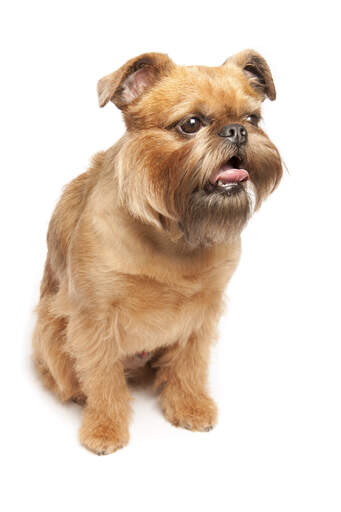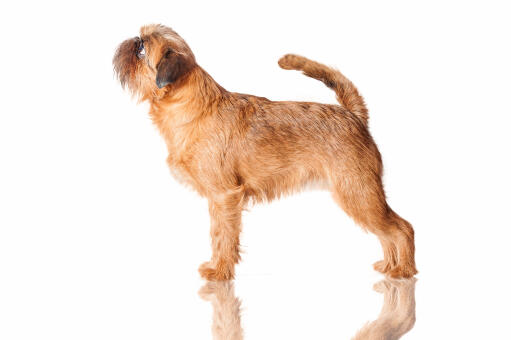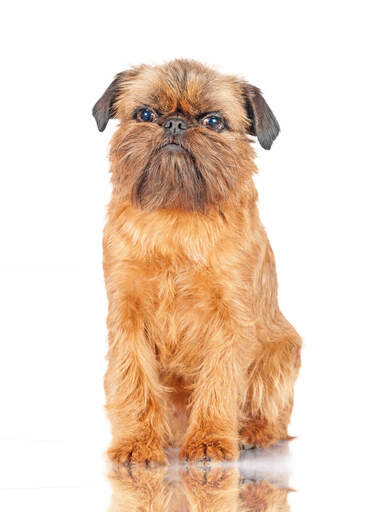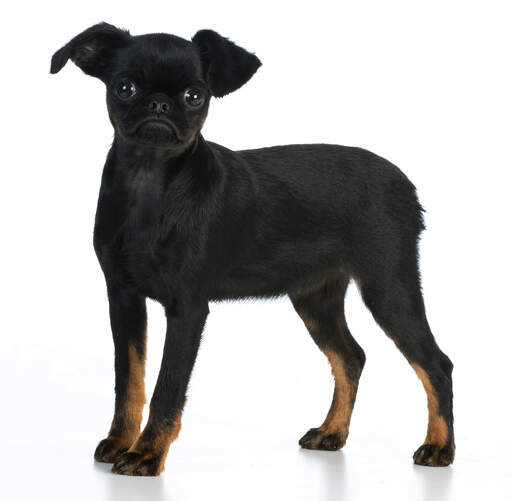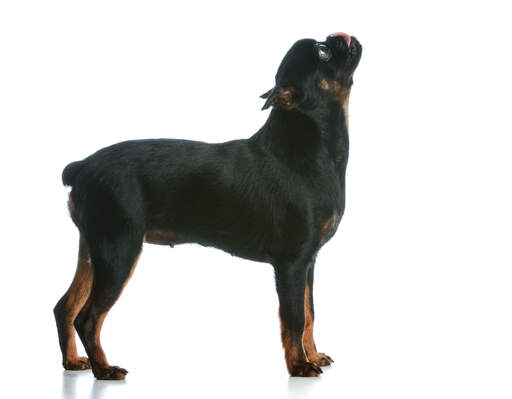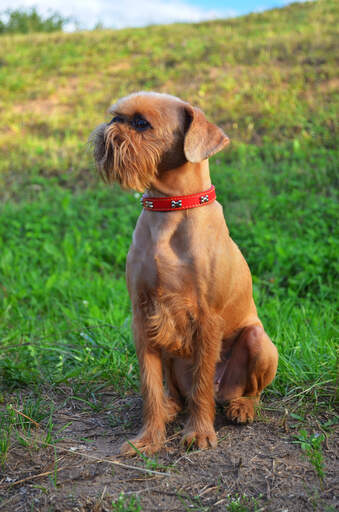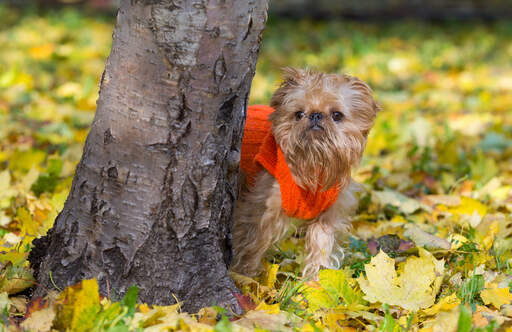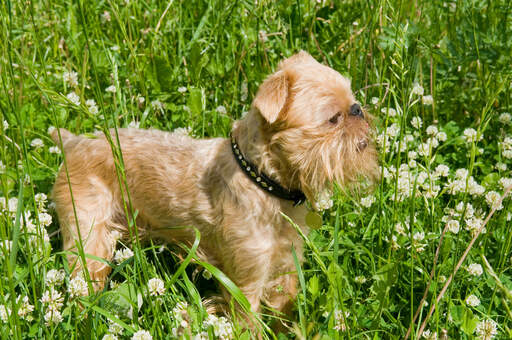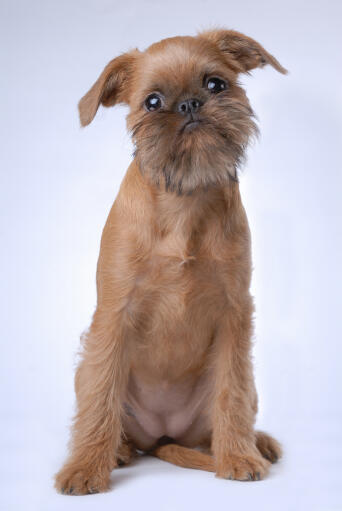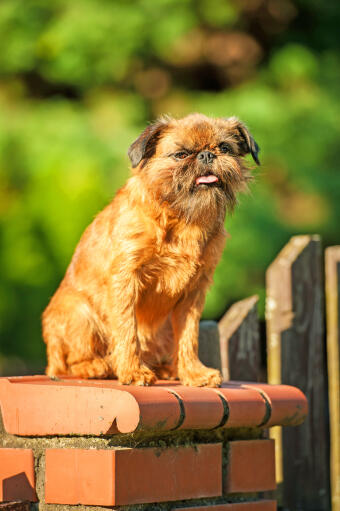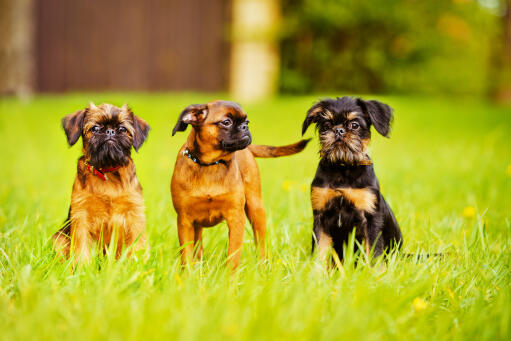Brussels Griffon Dogs











History
The Brussels Griffon comes from Belgium and descend from an old breed called the Smousje, a terrier like rodent catcher, most probably a cross with an Affenpinscher and Belgian dog called the Griffon d'Ecurie. With cross breeding in the late 1800's with the Pug, this created the characteristic face of the breed. By the early 1900's, the Griffon has gained massive popularity in Belgium and was beginning to appeal to the upper classes. In some countries the black rough coated types are known as Belgian Griffons, the smooth coated as Petit Brabancon and only the red rough coated classes as Brussels Griffon. Griffon means 'wirey'.
Behaviour
Brussels Griffons are happy little dogs who like to be around people. They tend to latch on to one family member more than others, but will be happy just to be around you. Following you on trips to the bathroom and anywhere around the house will be standard. They will want to cuddle up to you on the sofa and you will have a hard time getting them off your bed at night. They are plucky, active and are good with children as long as they aren't teased. They are rarely shy and often forget how small they are, so could get into trouble with larger dogs if you're not careful. They generally get on well with strangers, other pets and dogs if properly socialised. They are alert and interested in their surroundings, so will bark when someone is at the door. They can be sensitive at times, but are happy to please you, so reward and fuss based training works well. They seem to pick things up quite quickly and like performing tricks as this brings them attention. Griffons enjoy competitions such as agility and are good at it. Seen as a 'court jester' dressed in a fur suit, they are comical and content dogs, given enough love and affection. Due to them bonding closely to one or two family members, it is best to socialise them with as many people as possible from an early age to prevent them being too protective. They aren't snappy dogs, but problems could arise if they get too dependent. They dislike being left alone as they miss their owners too much. Their love of games and playing makes socialisation with others very easy. They can play fetch and with a ball and seem to never tire when fun is concerned. Once they've had enough, they'll curl up on your lap for a well earned nap. They need a shortish walk every day on a lead or a chance to run around outside, but aren't demanding of exercise. Their recall is usually good.
Grooming of the rough coated needs to be done 2 - 3 times a week with a decent brush to remove dead hair, plus stripping a few times a year. The smooth coated needs weekly brushing. They suffer very few health concerns, but can occasionally cataracts and weal bladder.
Temperament
Brussels Griffons have a playful and self confident temperament. Forming a tight bond with their owners they love attention and can be very playful. They can sometimes find rowdy children intolerable but will get along with most other dogs and household pets.
These dogs can be noisy and mischievious in the form of climbing and escaping from whatever is enclosing them.
Health Problems
Health problems that may affect Brussels Griffons may include canine hip dysplasia (CHD), patella luxation (dislocation of the kneecap), eye problems and some allergies.
Breed Details
- Status: Common
- Life Expectancy: 12 - 15 years
- Weight: 4 - 6 kg
- Height: 9 - 11"
- Rare: No
- Coat: Short
- Grooming Requirements: More than once per week
- Town or Country: Either
- Minimum Home Size: Flat
- Minimum Garden Size: No Garden
- Breed Type: Toy Dog
- Size: Small
- Energy Level: High
- Exercise Required: Up to 30 Minutes

